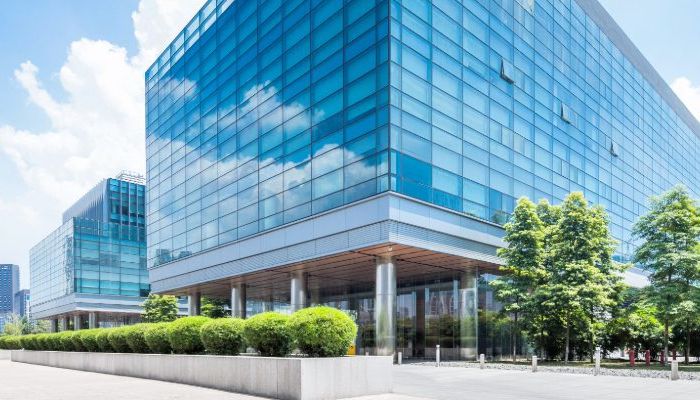Written by: Dan Lorenz, President of AMS CAD+CAFM Solutions
How Hoteling Has Changed Since the Pandemic
I was curious to see how widely used and accepted the idea of hoteling (sometimes referred to as “hotdesking”) was at companies both before and after the pandemic. To attract as many willing participants as possible, I narrowed the survey down to three simple questions. Below is a summary of my findings from 77 companies, gathered primarily through professionals in the International Facilities Management (IFMA) forums.
Before COVID-19
Hoteling can take on multiple forms, from free or open “vacant” spaces for temporary use as needed, to dedicated departmental use spaces that are reservable. My first question focused on what companies were doing before the pandemic. The results show that a 63% majority did not have official hoteling, but 18% had made provisions for “extra” space to use for visitors and/or remote workers. This of course was not designed for maximizing occupancy with a work-from-home (WHF) program since most corporations did not have an official WFH strategy. Corporate cultures were common to be found that everyone gets assigned their own workspace. It was much less typical to see a company that was implementing an unassigned seating environment. Only 36% had official hoteling in place pre-pandemic.

How is Hoteling Used?
Of the companies that did have hoteling in place, about 50% were dedicated to department-specific use while the other half kept them as free address. This represents a big difference since building areas and floors are often collocated by departments when assigned.
Departmental use hoteling is often referred to as “neighborhoods” where departments control the amount of personnel assigned (typically over assigned) to the number of workspaces available. Working in an area surrounded by those you need to collaborate with requires more coordination. Despite this, only 29% were using a calendar tool which can provide basic traditional booking times, but offers little to no policing of the usage. A smaller 12% used an actual booking system, whether kiosk or web-based to better track and manage the use of these spaces. Surprisingly, in this world of mobility, only a mere 3% were using a mobile device to book workspace reservations!
Free address spaces were more commonly in use as a “leftover” area, not widely used for the entire building. These were most often used on a first-come, first-served basis for use as needed since they were more used strategically as individual “me” spaces for on-site work used in conjunction with meetings in conference rooms during the day for collaboration. There was little tracking of the use of these spaces since they were simply meant to fill in for extra personnel as needed.

Hoteling Obstacles
Corporate culture was by far the most common reason given why companies weren’t using hoteling (43%). As mentioned, the idea that everyone gets an assigned space was quite common. People like to have their own space, and now home is their space. After culture, the next biggest obstacle was a lack of direction (29%) or backing from corporate (12%). There were no initiatives from the C-level to switch to hoteling as a solution to maximize space use and eliminate the need for some real estate. WFH was not widely accepted or proven and the mindset is that you come to the workplace to work.
As widely indicated in the comments provided, companies have now adopted WFH and eliminated the need for some positions to use office space, freeing up more available space to others – even creating a surplus of space. In others, the office layout did not fit a hoteling environment very well. Surprisingly as much as 12% of those surveyed simply were unaware of what software and solutions were available to help with implementing and managing hoteling. They had concerns about the ability to require approvals, perform health attestation, track utilization, check-in, and trigger cleaning/disinfecting actions.

Opportunity for Change
The mindset about employees working from home has now changed drastically – even flipped/reversed out of necessity. The culture shift has caused companies to look at their real estate and workers differently. Many are now considering hoteling even if they didn’t have it in place before the pandemic. The ones that already had it are commonly planning for expanding its use and even combining it with a new WFH program. Others are considering the neighborhood departmental concept, allowing for smaller tribes of collocated departments/personnel to use the space as their specific job function dictates.
FM:Systems’ Mobile Hoteling Solution
Technology can play a big role in enabling these new hoteling strategies. There are easy-to-use and implement cloud-based hoteling software solutions that also support mobile device bookings. Many are now built-in with COVID-19 health attestation questionnaires and pre-screening checks and balances. They can even provide email check-in “passes” and go so far as to turn badge access on or off for the day of arrival when hooked into the building security system. Finally, occupancy sensor technologies are affordable and offer real-time and statistical data about actual space utilization.
Real estate savings can certainly directly affect the bottom line, but it’s important to make sure employees feel safe and have easy tools to get into the office when they need to. To prepare, you can find out about what hoteling solutions are available, determine personnel space requirements by job function and department, review the feasibility of your existing space design, and ensure that safety measures and protocols are in place. In short, hoteling instantly became a more realistic option once WFH became necessary, and it simply makes business sense to see what hoteling has to offer especially during these times.
About AMS CAD + CAFM Solutions
AMS CAD + CAFM Solutions (AMS) is a leading Premier Certified Business Partner with FM:Systems of 18 years that specializes in consulting, design, and implementation of facilities management software and technology solutions. AMS is a full-service, goals-oriented CAFM/IWMS implementer that partners with customers to bring them best-in-class FM applications. Our innovative solutions combined with our industry experience have helped many of FM:Systems’ largest and most successful customers including corporate facilities, pharmaceutical/research companies, higher education campuses, and health care institutions.
For more information visit http://www.amscad.com











